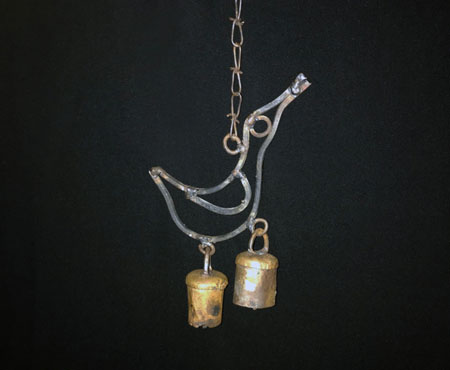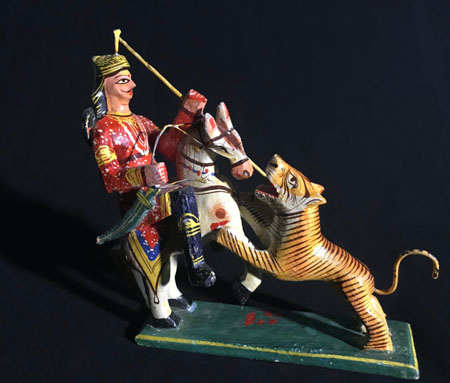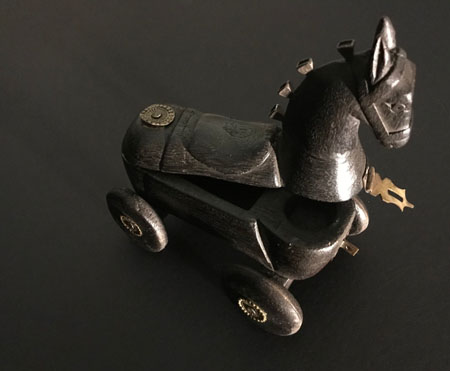Two copies of the Ancient India kit are available for checkout. Each kit is one complete unit, adaptable for grades 3 to 8. Included in the kit are integrated lessons outlined in the teacher's guide, images, and artifacts that have been carefully selected to acquaint students with primary sources. Below are some images and labels about some of the artifacts in this kit.
Noah Bells
This artifact represents the Aryan people, who were wandering herdsmen. Their food and clothing came from cattle. From their herds they also counted their wealth. These bells, such as the fascimile pictured below, are distinctive becasue each bell is completely made by hand. It is the secret family formula of smelting various metals, the hand hewed clapper, and the individual tuning of each bell that creates the unusual resonate sound. Shepherds prize these bells as they enable them to easily hear and find their flocks from many miles away. It is an old Indian belief that these bells scare away devils and evil spirits.

Figure Fighting Tiger
The Mogul emperors and nobles enjoyed hunting. They sometimes used cheetahs for hunting gazelle or hunted tigers while riding on the backs of elephants. Such toys as the one pictured below may have even been common prior to 1526 when the Moguls invaded northwest India.

Animal on Wheels
Tiny terra-cotta models of everyday objects such as this one seem to have been very popular at Mohenjo-Daro and Harappa. The hundreds of toys and miniature models that have been found sugget that special attention was paid to children. These toys and models make it possible to reconstruct scenes of daily life from that time.

Statue of Buddha
The teachings of Gautama Buddha had great popular appeal. Born to the Shakya tribe on the borders of Nepal, in about 560 B.C. Buddha (the Englightened One) left home at the age 29 and lived six years practicing asceticism. He gave up that practice and turned to meditation, receiving enlightenment after sitting under a tree for 49 days. The results of this meditation were given in a sermon in the Deer Park at Sarnath, 4 miles away from Banara. Basically, the Buddhist code was based upon the moral conduct of the individual. The great Mauryan ruler, Ashoka, converted to Buddhism. Ashoka was heavily influenced by Buddhist teachings, especially its principle of ahimsa or non-violence. Buddha was first depicted in human form some time in the 1st century B.C. The sculptors took Greek god Apollo as their first model, but soon Buddha's form became Indianised and the face assumed the closed eyes and the smile of the Asian Buddha. This statue pictured below is a replica, probably from the 5th century. Buddhism faded from India, a casualty in the war between supporters of rival gods.

